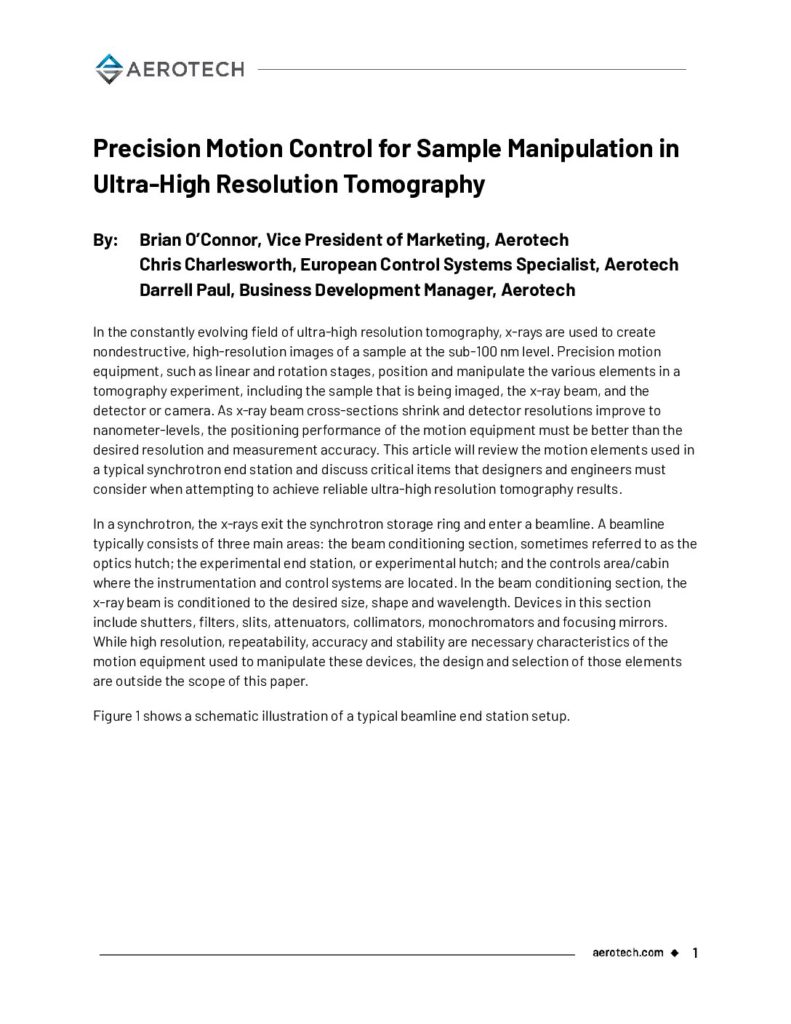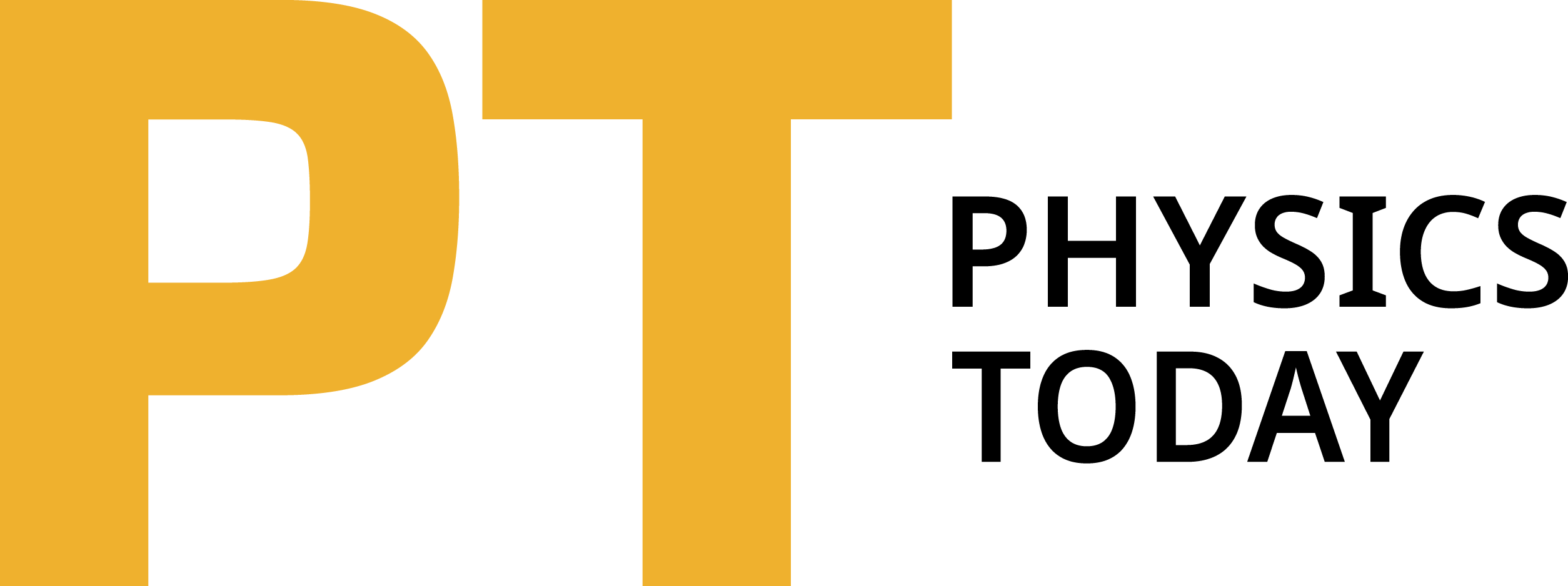
Register now free-of-charge to explore this white paper
In the constantly evolving field of ultra-high resolution tomography, x-rays are used to create nondestructive, high-resolution images of a sample at the sub-100 nm level. Precision motion equipment, such as linear and rotation stages, position and manipulate the various elements in a tomography experiment, including the sample that is being imaged, the x-ray beam, and the detector of camera. As x-ray beam cross-sections shrink and detector resolutions improve to nanometer-levels, the positioning performance of the motion equipment must be better than the desired resolution and measurement accuracy. This article will review the motion elements used in a typical synchrotron end station and discuss critical items that designers and engineers must consider when attempting to achieve reliable ultra-high resolution tomography results.

Physics Today and Wiley are proud to bring you this white paper, sponsored by Aerotech.
Partnered with
Physics Today, the flagship publication of the American Institute of Physics, is the most influential and closely followed physics magazine in the world. Physics Today‘s mission is to be a unifying influence on the physical sciences by cultivating a shared understanding, appreciation, and sense of belonging among physical scientists.

